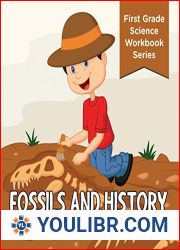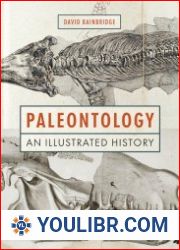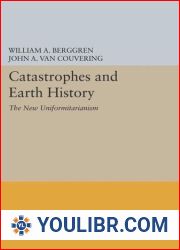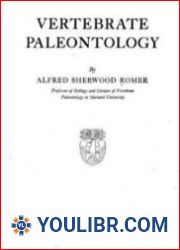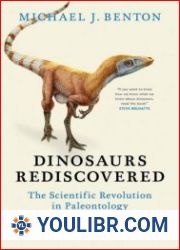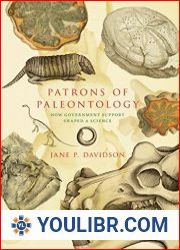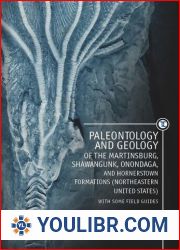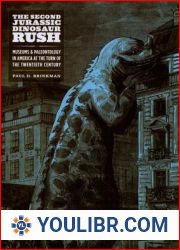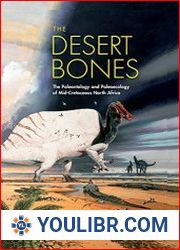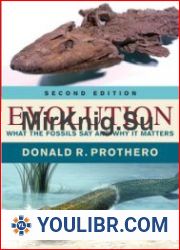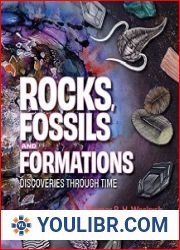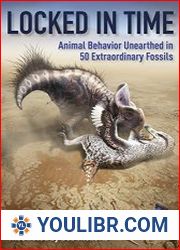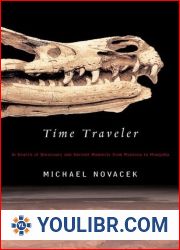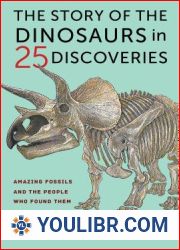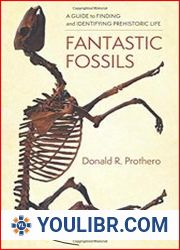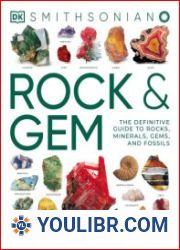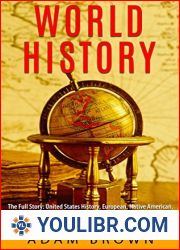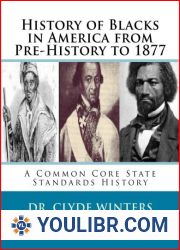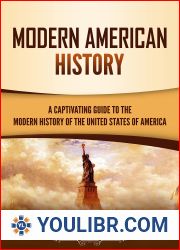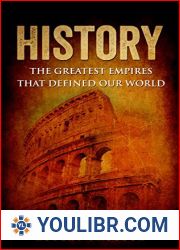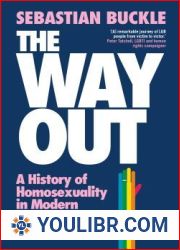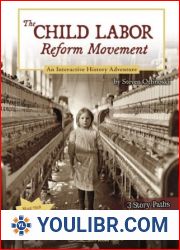
BOOKS - Fossils And History : Paleontology for Kids (First Grade Science Workbook Ser...

Fossils And History : Paleontology for Kids (First Grade Science Workbook Series): Prehistoric Creatures Encyclopedia (Children's Prehistoric History Books)
Author: Baby Professor
Year: December 20, 2015
Format: PDF
File size: PDF 3.9 MB
Language: English
Year: December 20, 2015
Format: PDF
File size: PDF 3.9 MB
Language: English
With a unique blend of pictures and minimal text, this workbook encourages active learning and fosters a love for the subject. Chapter 1: What are Fossils? In this chapter, we explore the concept of fossils and what they can tell us about the past. Your child will learn about the different types of fossils, such as body fossils, trace fossils, and track fossils, and how they provide valuable clues about prehistoric life. They'll discover how scientists use these fossils to understand the history of our planet and its inhabitants. Activity: Identify and label different types of fossils in images provided. Chapter 2: The Formation of Fossils Here, your child will learn how fossils form and the conditions necessary for their preservation. They'll understand how geological processes like erosion, sedimentation, and mineralization contribute to the creation of fossils.
Благодаря уникальному сочетанию рисунков и минимальному тексту эта рабочая тетрадь поощряет активное обучение и способствует любви к предмету. Глава 1: Что такое окаменелости? В этой главе мы исследуем концепцию окаменелостей и то, что они могут рассказать нам о прошлом. Ваш ребенок узнает о различных типах окаменелостей, таких как окаменелости тела, следы окаменелостей и отслеживание окаменелостей, а также о том, как они дают ценные подсказки о доисторической жизни. Они узнают, как ученые используют эти окаменелости, чтобы понять историю нашей планеты и ее обитателей. Деятельность: Идентификация и маркировка различных типов окаменелостей на предоставленных изображениях. Глава 2: Образование окаменелостей Здесь ваш ребенок узнает, как формируются окаменелости и какие условия необходимы для их сохранения. Они поймут, как геологические процессы, такие как эрозия, осадконакопление и минерализация, способствуют созданию окаменелостей.
Grâce à sa combinaison unique de dessins et de textes minimes, ce cahier de travail encourage l'apprentissage actif et favorise l'amour du sujet. Chapitre 1 : Qu'est-ce que les fossiles ? Dans ce chapitre, nous explorons le concept de fossiles et ce qu'ils peuvent nous dire sur le passé. Votre enfant apprendra à connaître différents types de fossiles, tels que les fossiles corporels, les traces de fossiles et le suivi des fossiles, ainsi que la façon dont ils fournissent des indices précieux sur la vie préhistorique. Ils apprendront comment les scientifiques utilisent ces fossiles pour comprendre l'histoire de notre planète et de ses habitants. Activité : Identification et marquage des différents types de fossiles sur les images fournies. Chapitre 2 : La formation des fossiles Voici que votre enfant découvre comment les fossiles se forment et quelles sont les conditions nécessaires à leur conservation. Ils comprendront comment les processus géologiques tels que l'érosion, la sédimentation et la minéralisation contribuent à la création de fossiles.
Gracias a su combinación única de dibujos y texto mínimo, este cuaderno de trabajo fomenta el aprendizaje activo y promueve el amor por el tema. Capítulo 1: Qué son los fósiles? En este capítulo exploramos el concepto de fósiles y lo que pueden decirnos sobre el pasado. Su hijo aprenderá sobre diferentes tipos de fósiles, como fósiles corporales, rastros de fósiles y rastreo de fósiles, así como cómo proporcionan pistas valiosas sobre la vida prehistórica. Aprenderán cómo los científicos utilizan estos fósiles para entender la historia de nuestro planeta y sus habitantes. Actividad: Identificación y etiquetado de diferentes tipos de fósiles en las imágenes proporcionadas. Capítulo 2: Formación de fósiles Aquí su hijo aprenderá cómo se forman los fósiles y qué condiciones son necesarias para su conservación. Comprenderán cómo procesos geológicos como la erosión, la sedimentación y la mineralización contribuyen a la creación de fósiles.
Graças à combinação única de desenhos e ao texto mínimo, este caderno de trabalho encoraja a aprendizagem ativa e promove o amor pela matéria. Capítulo 1: O que são os fósseis? Neste capítulo, exploramos o conceito de fósseis e o que eles podem nos dizer sobre o passado. O seu filho vai aprender sobre vários tipos de fósseis, como fósseis corporais, vestígios de fósseis e rastreamento de fósseis, e como eles dão pistas valiosas sobre a vida pré-histórica. Eles vão descobrir como os cientistas usam estes fósseis para compreender a história do nosso planeta e dos seus habitantes. Atividade: Identificação e marcação de diferentes tipos de fósseis nas imagens fornecidas. Capítulo 2: A formação de fósseis Aqui seu filho vai descobrir como os fósseis se formam e quais são as condições necessárias para preservá-los. Eles compreenderão como os processos geológicos, como erosão, convulsão e mineralização, contribuem para a criação de fósseis.
Grazie alla combinazione unica di disegni e al testo minimo, questo quaderno di lavoro incoraggia l'apprendimento attivo e promuove l'amore per la materia. Capitolo 1: Cos'è un fossile? In questo capitolo stiamo esplorando il concetto di fossili e ciò che possono dirci sul passato. Vostro figlio scoprirà di diversi tipi di fossili, come i fossili del corpo, tracce di fossili e il tracciamento dei fossili, e come forniscono preziosi indizi sulla preistoria. Scopriranno come gli scienziati usano questi fossili per capire la storia del nostro pianeta e dei suoi abitanti. Attività: identificazione e etichettatura di diversi tipi di fossili nelle immagini fornite. Capitolo 2: La formazione di fossili Qui vostro figlio scoprirà come si formano i fossili e quali sono le condizioni necessarie per preservarli. Capiranno come i processi geologici, come erosione, sedimento e mineralizzazione, contribuiscono alla creazione di fossili.
Mit seiner einzigartigen Kombination aus Zeichnungen und minimalem Text fördert dieses Arbeitsbuch aktives rnen und fördert die Liebe zum Thema. Kapitel 1: Was sind Fossilien? In diesem Kapitel untersuchen wir das Konzept der Fossilien und was sie uns über die Vergangenheit erzählen können. Ihr Kind lernt verschiedene Arten von Fossilien kennen, wie Körperfossilien, Fossilienspuren und Fossilienverfolgung, und wie sie wertvolle Hinweise auf prähistorisches ben geben. e erfahren, wie Wissenschaftler diese Fossilien nutzen, um die Geschichte unseres Planeten und seiner Bewohner zu verstehen. Aktivität: Identifizierung und Kennzeichnung verschiedener Arten von Fossilien in den bereitgestellten Bildern. Kapitel 2: Fossilienbildung Hier lernt Ihr Kind, wie Fossilien entstehen und welche Bedingungen für ihre Erhaltung notwendig sind. e werden verstehen, wie geologische Prozesse wie Erosion, Sedimentation und Mineralisierung zur Entstehung von Fossilien beitragen.
Dzięki unikalnej mieszance rysunków i minimalnego tekstu skoroszyt zachęca do aktywnego uczenia się i promuje miłość do tematu. Rozdział 1: Czym są skamieniałości? W tym rozdziale badamy pojęcie skamieniałości i co mogą nam powiedzieć o przeszłości. Twoje dziecko dowiaduje się o różnych rodzajach skamieniałości, takich jak skamieniałości ciała, ślady kopalne i śledzenie kopalności, oraz o tym, jak dostarczają cennych wskazówek na temat prehistorycznego życia. Dowiedzą się, jak naukowcy wykorzystują te skamieniałości do zrozumienia historii naszej planety i jej mieszkańców. Działanie: Identyfikacja i etykietowanie różnych rodzajów skamieniałości na przedstawionych obrazach. Rozdział 2: Formacja kopalna Tutaj Twoje dziecko dowiaduje się, jak tworzą się skamieniałości i jakie warunki są niezbędne do ich zachowania. Zrozumieją one, jak procesy geologiczne, takie jak erozja, sedymentacja i mineralizacja przyczyniają się do skamieniałości.
עם תערובת ייחודית של ציורים וטקסט מינימלי, ספר העבודה הזה מעודד למידה פעילה פרק 1: מהם מאובנים? בפרק זה, אנו חוקרים את מושג המאובנים ומה הם יכולים לספר לנו על העבר. הילד שלך לומד על סוגים שונים של מאובנים, כמו מאובני גוף, עקבות מאובנים ומעקב אחר מאובנים, ואיך הם מספקים רמזים יקרי ערך על חיים פרהיסטוריים. הם ילמדו כיצד מדענים משתמשים במאובנים אלה כדי להבין את ההיסטוריה של כוכב הלכת שלנו ותושביו. פעילות: זיהוי ותוויות של סוגים שונים של מאובנים בתמונות. פרק 2: היווצרות מאובנים כאן, ילדך לומד כיצד מאובנים נוצרים ואילו תנאים נחוצים לשימורם. הם יבינו כיצד תהליכים גיאולוגיים כגון שחיקה, משקעים ומינרליזציה תורמים להתאבנות.''
Benzersiz bir çizim ve minimal metin karışımı ile bu çalışma kitabı aktif öğrenmeyi teşvik eder ve konuya olan sevgiyi teşvik eder. Bölüm 1: Fosiller Nelerdir? Bu bölümde, fosiller kavramını ve bize geçmiş hakkında neler söyleyebileceklerini araştırıyoruz. Çocuğunuz, vücut fosilleri, fosil ayak izleri ve fosil takibi gibi farklı fosil türlerini ve bunların tarih öncesi yaşam hakkında nasıl değerli ipuçları sağladığını öğrenir. Bilim adamlarının gezegenimizin ve sakinlerinin tarihini anlamak için bu fosilleri nasıl kullandıklarını öğrenecekler. Etkinlik: Sağlanan görüntülerde farklı fosil türlerinin tanımlanması ve etiketlenmesi. Bölüm 2: Fosil Oluşumu Burada çocuğunuz fosillerin nasıl oluştuğunu ve onları korumak için hangi koşulların gerekli olduğunu öğrenir. Erozyon, sedimantasyon ve mineralizasyon gibi jeolojik süreçlerin fosilleşmeye nasıl katkıda bulunduğunu anlayacaklardır.
مع مزيج فريد من الرسومات والحد الأدنى من النصوص، يشجع هذا الكتيب التعلم النشط ويعزز الحب للموضوع. الفصل 1: ما هي الحفريات ؟ في هذا الفصل، نستكشف مفهوم الحفريات وما يمكن أن تخبرنا به عن الماضي. يتعلم طفلك عن أنواع مختلفة من الحفريات، مثل أحافير الجسم وآثار الأقدام الأحفورية وتتبع الأحافير، وكيف توفر أدلة قيمة حول حياة ما قبل التاريخ. سيتعلمون كيف يستخدم العلماء هذه الحفريات لفهم تاريخ كوكبنا وسكانه. النشاط: تحديد وتوسيم أنواع مختلفة من الحفريات في الصور المقدمة. الفصل 2: تكوين الأحافير هنا، يتعلم طفلك كيف تتشكل الحفريات وما هي الظروف اللازمة للحفاظ عليها. سوف يفهمون كيف تساهم العمليات الجيولوجية مثل التعرية والترسيب والتمعدن في التحجر.
이 통합 문서는 독특한 그림과 최소한의 텍스트를 혼합하여 적극적인 학습을 장려하고 주제에 대한 사랑을 장려합니다. 1 장: 화석은 무엇입니까? 이 장에서 우리는 화석의 개념과 과거에 대해 우리에게 말할 수있는 것을 탐구합니다. 자녀는 신체 화석, 화석 발자국 및 화석 추적과 같은 다양한 유형의 화석과 선사 시대 생활에 대한 귀중한 단서를 제공하는 방법에 대해 배웁니다. 그들은 과학자들이이 화석을 사용하여 지구와 주민의 역사를 이해하는 방법을 배울 것입니다. 활동: 제공된 이미지에서 다양한 유형의 화석을 식별하고 표시합니다. 2 장: 화석 형성 여기에서 자녀는 화석이 어떻게 형성되고 보존하기 위해 어떤 조건이 필요한지 알게됩니다. 그들은 침식, 퇴적 및 광물화와 같은 지질 과정이 화석화에 어떻게 기여하는지 이해할 것입니다.
図面と最小限のテキストのユニークな組み合わせで、このブックはアクティブな学習を奨励し、主題への愛を促進します。第1章:化石とは何ですか?この章では、化石の概念と過去について教えてくれることを探ります。あなたの子供は、身体の化石、化石の足跡、化石の追跡などのさまざまな種類の化石について学び、彼らが先史時代の生活に関する貴重なヒントを提供する方法を学びます。彼らは科学者がこれらの化石をどのように使って私たちの惑星とその住民の歴史を理解するかを学びます。活動:提供される画像内のさまざまな種類の化石の識別とラベル付け。第2章:化石形成ここでは、あなたの子供は化石がどのように形成され、どのような条件がそれらを保存するために必要であるかを学びます。彼らは、浸食、堆積、鉱化などの地質学的プロセスが化石化にどのように貢献するかを理解するでしょう。
通過獨特的圖紙組合和最低限度的文本,這本工作筆記本鼓勵積極的學習和對主題的熱愛。第1章:什麼是化石?在本章中,我們探討了化石的概念以及它們可以告訴我們過去的東西。你的孩子了解各種類型的化石,例如屍體化石,化石痕跡和化石追蹤,以及它們如何提供有關史前生活的寶貴線索。他們了解科學家如何利用這些化石來了解我們星球及其居民的歷史。活動:在提供的圖像中識別和標記不同類型的化石。第二章:化石的形成在這裏你的孩子會知道化石是如何形成的,以及保護它們所需的條件。他們將了解侵蝕,沈積和礦化等地質過程如何促進化石的產生。







